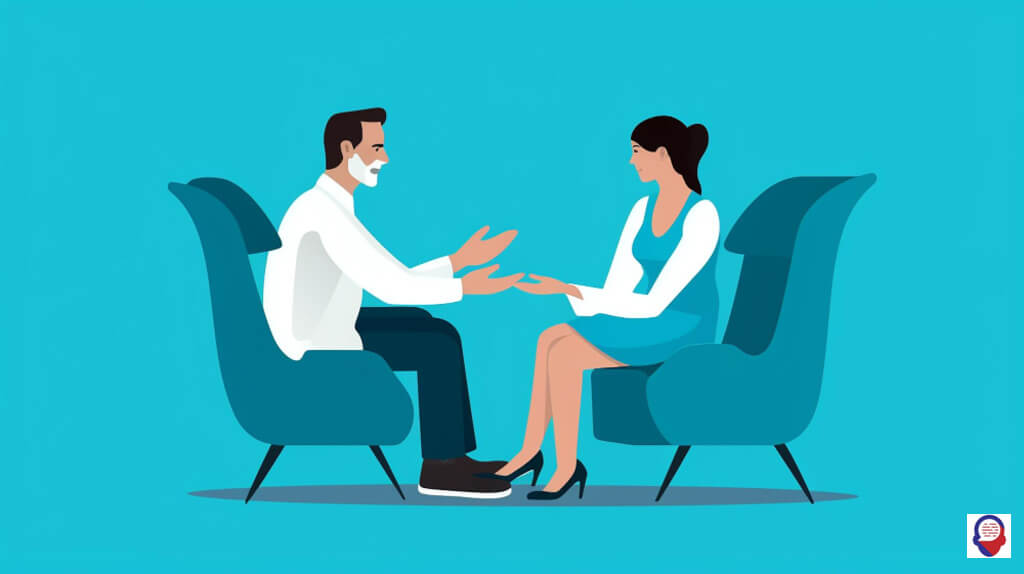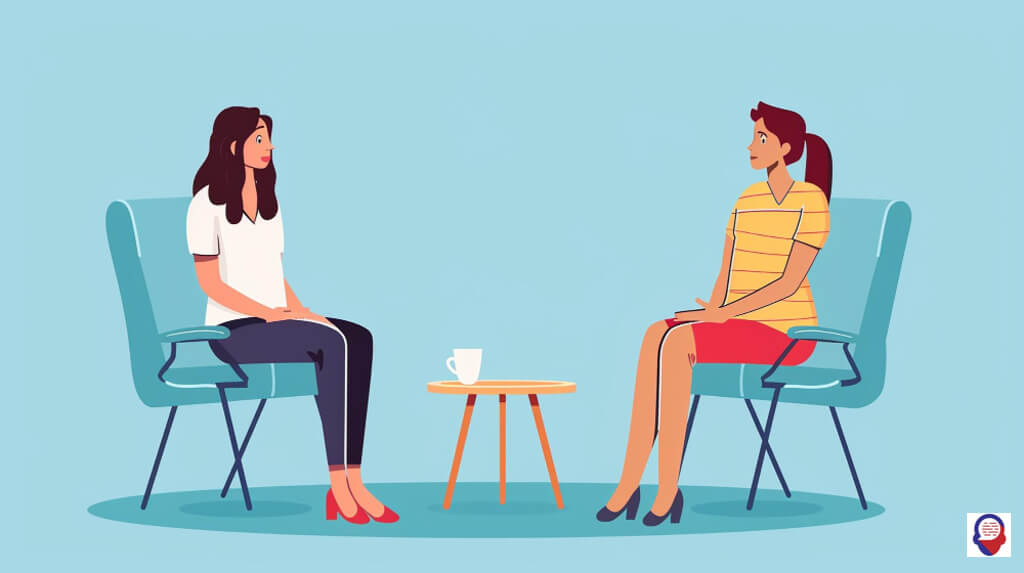Rewire Your Mind: A Practical Guide to Overcoming Depression with CBT
Depression can feel like a dense, suffocating fog. It descends without warning, draining the colour from your world, making even the simplest tasks feel like monumental efforts. It whispers lies, telling you that you are alone, that things will never get better, that the weight you carry is yours to bear in silence. But what if there was a way to challenge those whispers? What if you could learn a set of practical, proven skills to navigate your way out of the fog, one step at a time? This is the promise of Cognitive Behavioral Therapy, or CBT, a powerful approach that has helped millions of people reclaim their lives from depression.
This isn’t about simply thinking positive or ignoring your pain. It’s about understanding the engine that drives depression and learning how to take control of the wheel. It’s an active, collaborative journey that empowers you with the tools not just to feel better now, but to build lasting resilience against future challenges. Over the next few minutes, we will explore exactly what CBT is, how it works to dismantle the mechanics of depression, and what you can expect from this life-changing therapeutic process. The path forward may not be easy, but it is clear, and it begins with understanding.

What Exactly is Cognitive Behavioral Therapy?
Cognitive Behavioral Therapy, widely known as CBT, is a structured form of psychological treatment, or talk therapy. It operates on the fundamental principle that our psychological problems are often based on unhelpful ways of thinking and learned patterns of unhelpful behavior. CBT helps you become aware of these patterns, challenge your inaccurate or negative thinking, and develop better coping strategies, so you can respond to challenging situations more effectively.
Unlike some other forms of therapy that delve deep into the distant past to find the root causes of emotional difficulties, CBT focuses squarely on the here and now. It is a problem-focused and goal-oriented approach. You and your therapist work together as a team to identify specific problems and set clear, achievable goals. The primary aim is to equip you with a toolkit of skills that you can use for the rest of your life to manage your thoughts, feelings, and actions.
The therapy is built on the idea that our thoughts, emotions, physical sensations, and behaviors are all interconnected and can trap us in a vicious cycle. For instance, a negative thought can lead to a sad feeling, which might cause you to withdraw from others, which in turn reinforces your initial negative thought. CBT teaches you how to break these cycles. It’s a very active form of therapy, where you learn and practice new skills both during and between sessions.

How Does CBT Specifically Target Depression?
CBT specifically targets depression by systematically identifying, challenging, and changing the negative thought patterns and maladaptive behaviors that create and sustain the illness. It works by breaking down what can feel like an overwhelming and amorphous problem, depression, into smaller, more manageable parts, allowing you to tackle each component directly. By addressing both the "cognitive" (thinking) and "behavioral" (doing) aspects of depression, it provides a comprehensive strategy for recovery.

What is the Cognitive Triangle?
The cognitive triangle is a simple yet powerful model that illustrates the direct and interconnected relationship between our thoughts, our feelings or emotions, and our behaviors. It forms the very foundation of CBT. The model shows how a thought can trigger a feeling, which in turn leads to a specific action or behavior, which then can circle back and reinforce the original thought.
Imagine you make a small mistake at work. The thought that pops into your head might be, "I’m completely useless." This thought directly fuels a feeling of intense sadness and hopelessness. This feeling then influences your behavior, perhaps causing you to avoid your colleagues for the rest of the day and go straight home to bed. This act of withdrawal then validates your original thought, "See? I am useless, I can’t even face people." This creates a self-perpetuating, downward spiral that is characteristic of depression.
CBT intervenes by teaching you how to press pause on this automatic cycle. It helps you recognize that your thoughts are just thoughts, not absolute facts. By learning to examine and challenge the initial thought, you can change the entire sequence. A more balanced thought, like "I made a mistake, but everyone makes them sometimes," leads to a less intense feeling, like mild disappointment instead of deep sadness, and a more constructive behavior, like asking a colleague for advice or simply moving on with your day.

How Does CBT Address Negative Automatic Thoughts?
CBT addresses Negative Automatic Thoughts, often called NATs, by first teaching you how to become a detective of your own mind. It trains you to catch these fleeting, spontaneous, and often deeply ingrained thoughts that pop into your head and immediately worsen your mood. These thoughts are called "automatic" because they happen so quickly and habitually that we often don’t even notice them, we just feel their emotional impact.
Once you learn to identify these NATs, the next step is to evaluate them. A core technique in CBT is to treat these thoughts not as facts, but as hypotheses that need to be tested. You learn to ask critical questions: What is the evidence that supports this thought? What is the evidence against it? Am I confusing a feeling with a fact? Is there a more balanced or alternative way of looking at this situation? This process is known as cognitive restructuring.
The final step is to generate a more adaptive and realistic response. This isn’t about forced positive thinking, but about developing a more balanced and compassionate perspective. By consistently catching, checking, and changing your NATs, you begin to weaken the neural pathways that support depressive thinking and build new, healthier ones. Over time, this process becomes more natural, reducing the power these thoughts have over your emotional state.

What are Cognitive Distortions?
Cognitive distortions are faulty or irrational patterns of thinking that cause us to perceive reality in inaccurate, and usually negative, ways. These are the specific mental filters that twist our experiences, convincing us of things that simply aren’t true and reinforcing the painful emotions associated with depression. CBT helps you identify these specific errors in your thinking so you can correct them.
One common distortion is All-or-Nothing Thinking, also known as black-and-white thinking. This is when you see things in absolute terms, if a situation falls short of perfect, you see it as a total failure. Another is Overgeneralization, where you come to a general conclusion based on a single incident or piece of evidence. If one thing goes wrong, you expect a never-ending pattern of defeat.
Mental Filter is when you pick out a single negative detail and dwell on it exclusively, so that your vision of all reality becomes darkened, like a drop of ink that discolours a whole beaker of water. Catastrophizing involves expecting disaster to strike, no matter what. You might hear this as "what if" thinking, where you anticipate the worst possible outcome in any given situation.
Finally, Personalization is a distortion where you believe that you are the cause of some negative external event which, in fact, you were not primarily responsible for. Learning to spot these and other distortions is like turning on a light in a dark room, it allows you to see your thoughts more clearly and challenge their validity, freeing you from their grip.

What Happens in a Typical CBT Session for Depression?
A typical CBT session for depression is a collaborative and structured meeting, usually lasting about 50 minutes, that follows a predictable format. It generally begins with a brief check-in on your mood and symptoms since the last meeting, followed by a review of the "homework" or practice tasks you worked on during the week. Then, you and your therapist will collaboratively set an agenda for the current session, deciding on the key problems or skills you want to focus on. The bulk of the session is dedicated to learning and practicing new CBT techniques, and it concludes with a summary of what was covered and the agreement on a new practice assignment for the week ahead.

What is the Structure of a Session?
CBT sessions are intentionally structured to maximize their effectiveness and keep the therapy focused and on track. This structure provides a sense of safety and predictability, which can be incredibly grounding when you’re struggling with the chaos of depression. The session almost always starts with a mood check, often using a simple rating scale to track your progress over time. This is followed by setting a clear agenda.
This agenda-setting is a team effort. Your therapist will ask what you’d like to work on, and together you will prioritize the most pressing issues. This ensures the therapy is always relevant to your immediate struggles. The middle part of the session is the "work" phase, where you’ll actively engage with CBT concepts, perhaps analyzing a specific situation that was difficult during the week, challenging a negative thought pattern, or planning a behavioral experiment.
The final part of the session is dedicated to consolidation and planning. Your therapist will summarize the key takeaways and insights from the session, ensuring you have a clear understanding of what you’ve learned. You will then collaboratively design a "homework" assignment, a practical task to help you apply the new skills in your daily life. This structure ensures that every session builds upon the last, moving you steadily toward your therapeutic goals.

What Kinds of Techniques Will I Learn?
In CBT for depression, you will learn a range of practical, hands-on techniques designed to give you direct control over your thoughts and behaviors. The two most fundamental techniques are cognitive restructuring, which targets your thinking patterns, and behavioral activation, which targets your actions. You will also learn valuable problem-solving and coping skills.
Cognitive restructuring is the process of challenging and changing your cognitive distortions and negative automatic thoughts. A key tool for this is the "thought record." This is a structured way of logging a situation that triggered a negative emotion. You write down the situation, the automatic thoughts that came up, and the emotions you felt. Then, you play detective, gathering evidence for and against your automatic thought, and finally, you formulate a more balanced, realistic alternative thought. This systematic process helps you break the habit of negative thinking.
Behavioral Activation is one of the most powerful tools for lifting depression. Depression naturally makes you want to withdraw and do less, but this inactivity and isolation only make the depression worse. Behavioral Activation directly counters this by helping you gradually increase your engagement in positive, rewarding, or meaningful activities, even if you have no motivation to do them. The principle is that action precedes motivation. You and your therapist will schedule specific activities into your week, starting small, to reintroduce sources of pleasure and accomplishment into your life, breaking the cycle of inertia.

What is the Role of Homework in CBT?
Homework in CBT, often called "practice assignments" or "action plans," is absolutely essential to the success of the therapy. It is the bridge between the insights you gain in the 50-minute session and the reality of your life during the other 10,000 minutes of the week. True, lasting change doesn’t happen in the therapist’s office, it happens when you apply the skills you are learning to real-world situations.
These assignments are not like school homework, they are not graded and there’s no "failure." They are experiments designed to help you practice what you’ve learned. An assignment might be to keep a thought record for a few days to get better at identifying your NATs. It could be to schedule and carry out one pleasant activity, like a short walk in the park, as part of behavioral activation. Or it could be to practice a specific problem-solving technique on a current life stressor.
The work you do between sessions is what solidifies your learning, builds new neural pathways in your brain, and empowers you to become your own therapist. It transforms CBT from something that is done to you into something that you do for yourself. Consistently engaging with these practice tasks is one of the strongest predictors of a positive outcome in therapy.

How Effective is CBT for Depression?
CBT is one of the most extensively researched and scientifically validated treatments for depression, and its effectiveness is firmly established. Numerous large-scale clinical trials have demonstrated that CBT is a highly effective intervention for mild, moderate, and severe depression. For many people, particularly those with mild to moderate depression, its effectiveness is comparable to that of antidepressant medication.
The National Institute for Health and Care Excellence (NICE), which provides evidence-based guidance for the NHS, recommends CBT as a first-line treatment for depression. One of its major strengths is its focus on skill-building. Because you are not just talking about your problems but are actively learning tools to manage them, the benefits of CBT are often long-lasting.
Studies have shown that individuals who recover from depression through CBT have a lower rate of relapse compared to those treated with medication alone. This is because the skills you learn become a permanent part of your mental toolkit, giving you the ability to handle future stressors and recognise early warning signs of a depressive dip before it takes hold. CBT can be used as a standalone treatment or can be effectively combined with antidepressant medication, often leading to better outcomes than either treatment on its own, especially in cases of more severe or chronic depression.

How Long Does CBT Take and What Can I Expect?
CBT is designed to be a time-limited, short-term therapy, which means it has a clear beginning, middle, and end. For depression, a typical course of CBT usually lasts for somewhere between 12 and 20 weekly sessions. The exact duration will depend on several factors, including the severity and complexity of your depression, your specific goals, and the pace at which you work.

What is the Typical Timeline?
A typical timeline for CBT involves weekly sessions, each lasting around 50 minutes, for a period of about three to five months. The early sessions, perhaps the first one to four, are focused on assessment, education, and goal setting. Your therapist will get to know you, explain the CBT model in detail, and you’ll work together to establish clear, measurable goals for what you want to achieve.
The middle phase of therapy, from around session five to twelve, is the most intensive skill-building period. This is where you will dive deep into techniques like cognitive restructuring and behavioral activation, practicing them consistently both in and out of session. The later sessions are then focused on consolidating your skills and developing a relapse prevention plan. You’ll identify your personal warning signs and create a concrete plan for how to respond if you notice depressive symptoms returning in the future. After the main course of treatment, some people may benefit from occasional "booster" sessions every few months to help maintain their progress.

What if I Don’t Feel Better Immediately?
It is completely normal and, in fact, very common not to feel better immediately when starting CBT. This is a crucial point to understand. CBT is not a magic pill, it is a process of learning, practicing, and internalizing a new set of skills. Just like learning a musical instrument or a new language, it takes time, effort, and consistent practice to see significant results.
In the beginning, the act of focusing on your negative thoughts and feelings can sometimes even make you feel a little worse before you start to feel better. This is a normal part of the process. The key is to be patient with yourself and to trust the process. Progress is rarely a straight line, it often involves ups and downs. Some weeks you will feel like you’ve made huge strides, and other weeks might feel more like a struggle.
The most important thing is to stick with it and to be open and honest with your therapist. If you feel like things aren’t working or you’re struggling with the homework, tell them. They can adjust the approach, try different techniques, or help you overcome barriers. Lasting change is gradual, and every small step you take is a victory in itself.
Frequently Asked Questions

Is CBT suitable for everyone with depression?
CBT is effective for a very wide range of people, but it may not be the best fit for everyone. Its suitability depends on the individual. The structured, homework-oriented nature of CBT requires a willingness to be an active participant in your own recovery. If you are in a state of very severe depression where concentration and motivation are extremely low, it might be difficult to engage fully at first. In such cases, it might be recommended to start with medication to lift the fog slightly before beginning CBT, or to use a combined approach from the start.

Can I do CBT on my own?
You can certainly learn and practice many CBT principles on your own using self-help books, online programs, and apps, and this can be very beneficial, especially for milder symptoms. This is often called "self-directed CBT." However, for moderate to severe depression, working with a qualified therapist is highly recommended. A therapist provides personalized guidance, helps you identify blind spots in your thinking, keeps you accountable, and provides crucial human support and motivation, which can be difficult to replicate on your own when you are feeling low.

What’s the difference between CBT and just talking to a friend?
Talking to a trusted friend is incredibly valuable and an important part of a good support system. However, it is very different from CBT with a trained professional. A friend offers empathy, support, and their own perspective. A CBT therapist, on the other hand, is a trained expert who uses a specific, evidence-based psychological model to help you systematically change the underlying cognitive and behavioral patterns that cause your depression. They teach you specific skills, follow a structured treatment plan, and maintain professional boundaries to keep the focus entirely on your well-being and therapeutic goals.

The journey out of depression is a profound act of courage, and taking the first step is often the most difficult part. If the cycles of negative thinking and heavy feelings have become too much to carry, please know that you do not have to face them alone. At Counselling-uk, we believe in providing a safe, confidential, and professional place to get the help you deserve. Our qualified therapists are here to guide you, teaching you the practical tools of CBT to help you challenge depression and rebuild your life. We are here to offer support for all of life’s challenges. Reach out to us today, and let’s begin building your path toward a brighter, more hopeful tomorrow.



